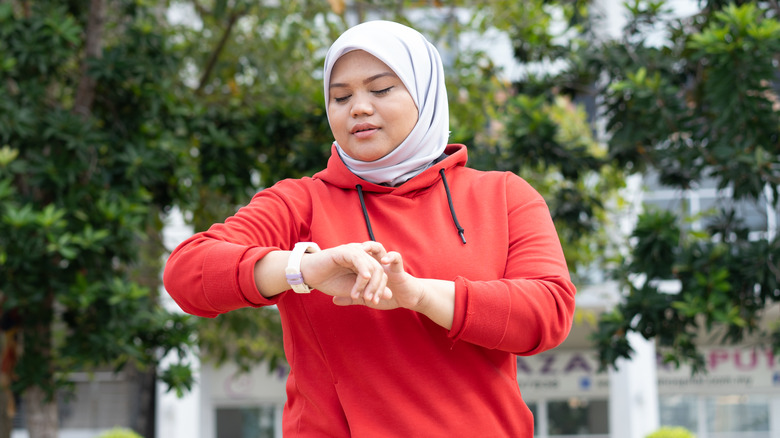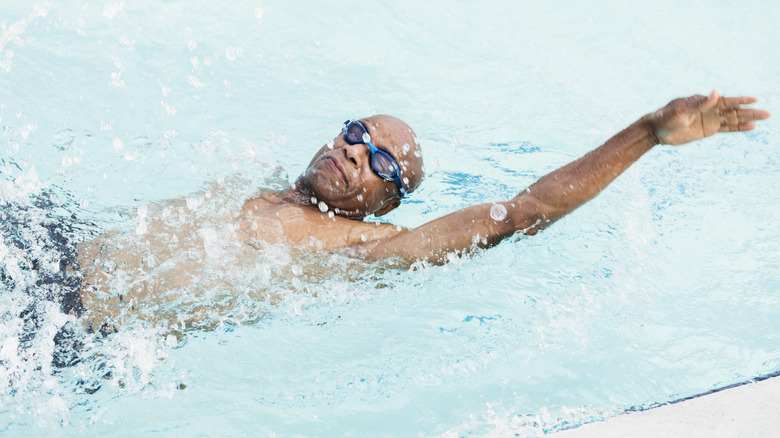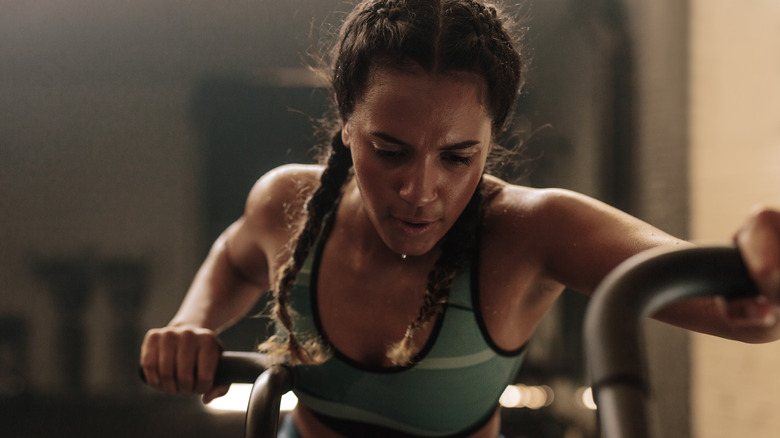Here's How Many Minutes Of Exercise You Need To Lower Your High Cholesterol
We've all been told that exercise is essential to our physical and mental health. But when it comes down to the nitty-gritty, being told to just get out there and exercise leaves us with a lot of questions. What kind of physical activity? How much? How often? Furthermore, do these recommendations change if we're looking to address specific health issues like high cholesterol?
Produced by the liver, blood cholesterol is a valued player when it comes to hormone production and digestion (per U.S. Centers for Disease Control and Prevention). The good news is that our body has us covered by providing us with all the cholesterol we need. The bad news? Well, the body has us covered by providing us with all the cholesterol we need. Therefore, it's recommended to limit our intake of dietary cholesterol, but this isn't always easy.
Having high levels of HDL cholesterol (or good cholesterol) can help protect against heart disease and stroke. Having high levels of LDL cholesterol (or bad cholesterol), on the other hand, can make us more vulnerable to these conditions. A total cholesterol level that exceeds 200 milligrams per deciliter (mg/dL) is considered high. For those with high cholesterol, here's how many minutes of daily or weekly exercise to aim for to help lower this measurement.
How many minutes of exercise may help lower cholesterol
According to the American Heart Association, adults with high cholesterol are encouraged to get 150 minutes or more of moderate-intensity aerobic exercise each week as an effective means of lowering cholesterol. When breaking this down into daily chunks, this equates to 30 minutes of exercise five days a week. This can be achieved through walking, cycling, or swimming laps.
Some research shows, however, that people with high cholesterol may want to add a little more time to the clock. In a 2014 scientific review published in Sports Medicine, researchers did a deep dive into three different types of exercise and their effects on patient cholesterol levels. Specifically, they looked at aerobic exercise, resistance training, and combined aerobic and resistance training. The researchers also factored in intensity and duration in their analysis of each kind of workout.
Based on their findings, the study team issued their expert recommendations stating that individuals with high cholesterol looking to reduce LDL cholesterol, boost HDL cholesterol, and lower triglycerides should aim for more than 30 minutes of exercise five days a week. For older adults or people with disabilities, it is recommended to increase physical activity as much as is safely possible.
How exercise intensity may influence cholesterol levels
In addition to duration, exercise intensity may also influence whether we see a drop in our LDL cholesterol levels. The researchers noted that generally speaking, greater intensity exercise is needed in order to effectively lower bad cholesterol (per Sports Medicine). This proved to be the case for aerobic exercise when it came to overall lipid panel improvements, but for resistance training, increasing the number of reps was shown to be more effective than boosting exercise intensity. While adding resistance training on top of aerobic exercise may also benefit our lipid profile, more research is still needed.
For those taking the first steps on their fitness journey, the researchers recommend beginning with just one or the other: either prolonged moderate-intensity aerobic exercise or resistance training. While physical activity is important in managing high cholesterol, so is maintaining a healthy weight, eating a balanced diet, and taking any medications as prescribed. Keep up with regular cholesterol checks, as recommended by your doctor, and work with your provider to develop a treatment plan.



